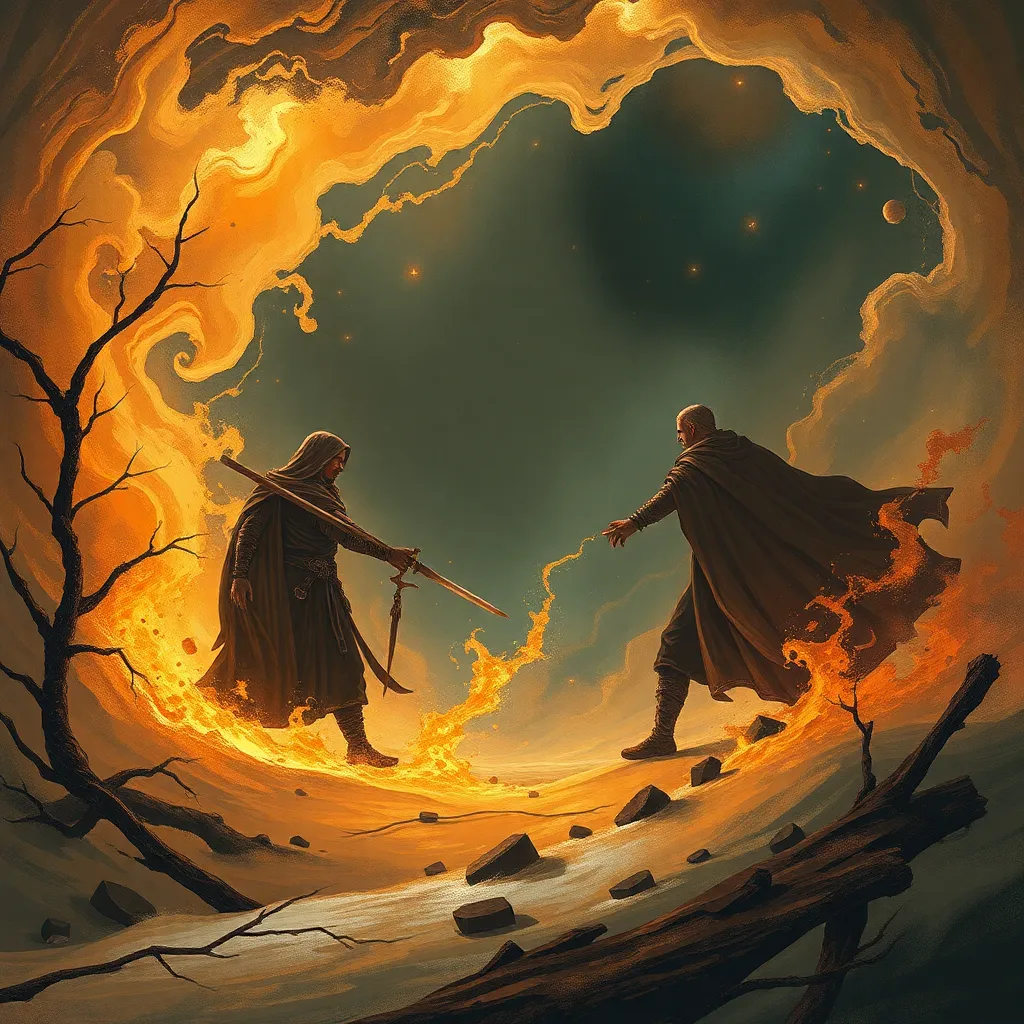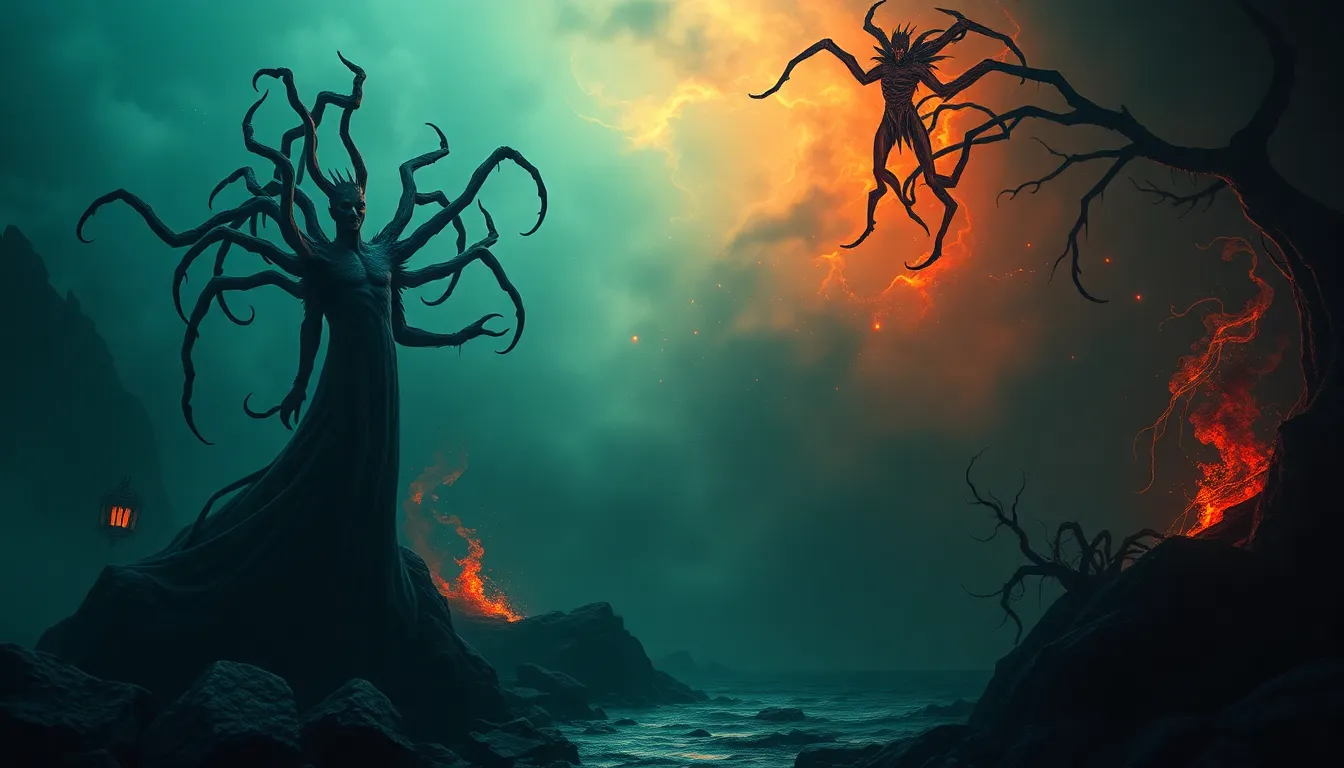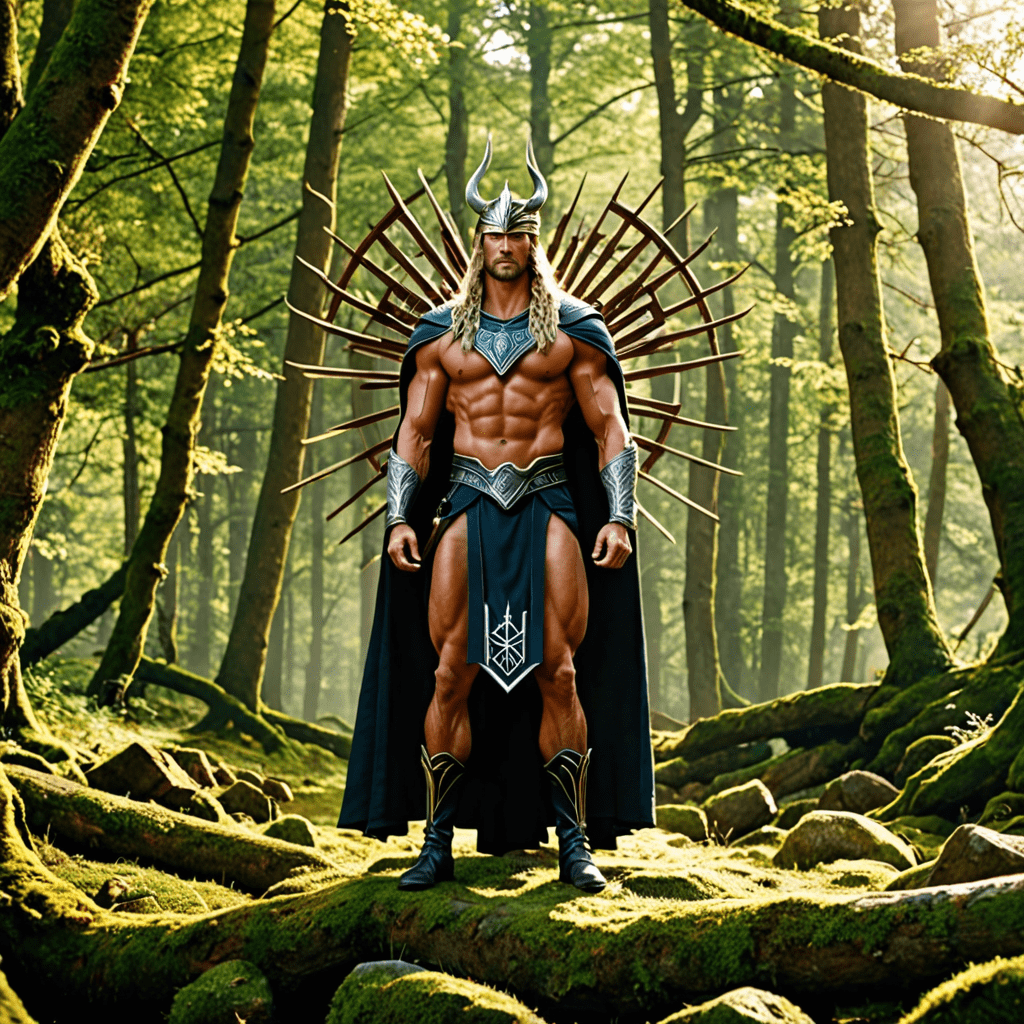The Deathless and the Hero: Koschei’s Relationship to the Slavic Hero Cycle
I. Introduction
The Slavic Hero Cycle is a rich tapestry of narratives that celebrate the valor and adventures of heroes within Slavic folklore. These stories often intertwine themes of bravery, love, and the eternal struggle between good and evil. Central to many of these tales is the enigmatic figure of Koschei the Deathless, a character whose presence embodies the complexities of mortality and the human condition.
This article aims to explore the multifaceted relationship between Koschei and the heroes of Slavic folklore. By examining Koschei’s origins, his role as an antagonist, and the thematic parallels that arise from his interactions with heroes, we can uncover the significance of his character in the broader context of Slavic mythology.
II. The Origins of Koschei the Deathless
Koschei the Deathless has deep historical and mythological roots within Slavic culture. His character is often depicted as a powerful sorcerer who has achieved immortality through arcane means. The origins of Koschei can be traced back to ancient Slavic beliefs, where he is often associated with the forces of chaos and death.
Variations of Koschei appear in different Slavic regions, each adding unique elements to his character. For instance, in some tales, he is portrayed as a cunning and malevolent figure, while in others, he takes on more nuanced characteristics, reflecting the complexities of life and death.
- Symbolism of immortality: Koschei’s deathlessness symbolizes the human fear of mortality and the desire for eternal life.
- Deathlessness: His inability to die is often linked to the idea of life being inextricably tied to death, creating a balance that heroes must confront.
III. Koschei as the Antagonist
As a villain, Koschei embodies many characteristics typical of antagonists in folklore. He is often depicted as cunning, ruthless, and possessing dark magical powers. His primary goal is to thwart the plans of heroes, often by kidnapping princesses or seizing kingdoms.
In Slavic epics and tales, Koschei serves as a formidable obstacle that heroes must overcome. His presence is essential to the narrative structure, providing tension and drama that propel the story forward. The thematic significance of Koschei’s opposition to heroes reflects broader cultural concerns about the struggle against evil and the quest for justice.
- Cunning and deceit: Koschei often uses trickery to ensnare heroes, testing their resolve and intelligence.
- Dark magic: His mastery over dark sorcery symbolizes the dangers that lie in the pursuit of power without moral considerations.
IV. The Hero’s Journey in Slavic Folklore
Slavic heroes share common traits that define their journeys. They are typically brave, resourceful, and possess a strong moral compass. Their quests often involve rescuing loved ones, restoring order, or seeking revenge against malevolent forces like Koschei.
The hero’s journey is fraught with challenges that test their resolve. These challenges often manifest through encounters with Koschei, who represents the ultimate test of courage and skill. The interactions between heroes and Koschei highlight the duality of life and death, where heroes must confront mortality to achieve their goals.
- Common traits of Slavic heroes:
- Bravery in the face of danger
- Intelligence and wit
- Strong sense of justice
- Challenges faced:
- Overcoming magical barriers
- Outsmarting Koschei’s traps
- Rescue missions fraught with peril
V. Thematic Parallels: Death and Rebirth
The themes of life, death, and resurrection are prevalent in the narratives surrounding Koschei and the Slavic heroes. These stories often explore the cyclical nature of existence, where death is not an end but a transformation.
Koschei plays a pivotal role in this cycle, as his very existence challenges heroes to confront their own mortality. Through their battles with Koschei, heroes often experience moments of death and rebirth, emerging stronger and wiser from their encounters.
- Exploration of life and death: The struggle against Koschei often symbolizes the broader human struggle against fate and mortality.
- Confronting mortality: Heroes must face their fears and embrace the inevitability of death to achieve greatness.
VI. Cultural Interpretations of Koschei
Koschei’s portrayal varies across different regions and cultures, reflecting local beliefs and values. His character has been shaped by the influences of Christianity, which introduced new moral dimensions to his story, often reinterpreting him as a symbol of evil that must be vanquished.
Modern adaptations in literature and media continue to reinterpret Koschei, highlighting his enduring relevance in contemporary storytelling. From fairy tales to fantasy novels, Koschei remains a compelling figure that captures the imagination.
- Regional variations: Different Slavic cultures have distinct interpretations of Koschei, influencing how he is perceived and portrayed.
- Influence of Christianity: The introduction of Christian themes reshaped Koschei’s character, emphasizing moral lessons.
VII. The Legacy of Koschei in Contemporary Culture
Koschei’s influence extends beyond traditional folklore into modern fantasy and storytelling. His archetype as a dark sorcerer or immortal villain resonates with audiences, inspiring countless adaptations in various media.
In films, literature, and video games, Koschei’s character continues to evolve, reflecting contemporary themes while maintaining his mythological roots. The ongoing relevance of Koschei and Slavic heroes highlights the universal appeal of these narratives.
- Representation in media:
- Films depicting Slavic myths
- Fantasy novels featuring Koschei as a villain
- Video games incorporating Slavic folklore elements
- Enduring themes: The struggles between good and evil, life and death, continue to resonate with modern audiences.
VIII. Conclusion
Koschei’s relationship with Slavic heroes is a complex interplay of conflict, challenge, and transformation. As an antagonist, he embodies the fears and challenges that heroes must face in their journeys, ultimately leading to themes of heroism and mortality.
Reflecting on the enduring themes of heroism and the cyclical nature of life and death, we see that Koschei is more than just a villain; he is a catalyst for growth and understanding in the narratives of Slavic folklore. Preserving these stories is vital, as they offer valuable insights into human nature and our relationship with mortality.



